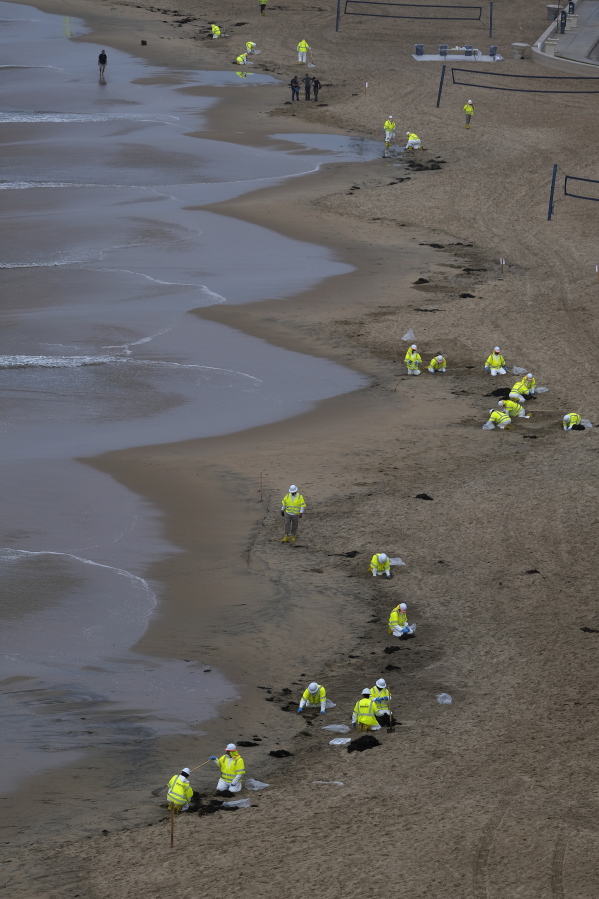HUNTINGTON BEACH, Calif. — After a crude oil sheen was detected on the waters off the Southern California coast, environmentalists feared the worst: A massive spill that would wreck the ecosystem.
A week later, the region and its signature beaches appear to have been spared a potentially calamitous fate, though the long-term toll on plant and animal life remains unknown.
The Coast Guard estimates a minimum of about 25,000 gallons of oil spilled from a ruptured pipeline off the shores of Orange County and no more than 132,000 gallons.
“Based on what we’re seeing, it’s a lighter impact than expected of a worst-case discharge,” California Fish and Wildlife Lt. Christian Corbo said. “We’re hoping to see less impacts to the shoreline, less impacts to wildlife, based on that lowered threshold.”
The news was welcome after a harrowing week of beach closures in seaside communities where life revolves around the water. Officials initially feared Huntington Beach could be off-limits to surfers and swimmers for months. But Mayor Kim Carr on Thursday said she was “cautiously optimistic” they could be back in the water in weeks.
Many beaches remain open for volleyball, sunbathing and other activities, though people must stay away from the water.
An oily sheen was reported on the water the evening of Oct. 1. But it wasn’t until the next morning that officials confirmed the spill. The Coast Guard is investigating whether a ship’s anchor might have snagged, bent and ruptured a pipeline owned by Houston-based Amplify Energy Corp. that shuttles crude from its three offshore platforms to a facility on the shore.
Out by the oil platforms, there was no visible sheen by mid-week, and the putrid odor that blanketed Huntington Beach last weekend had faded. Dolphins jumped in the waves, and birds skimmed the water’s surface.
But environmental advocates said the situation remains serious, and they fear the long-term effect on wetlands and ocean life. Crude oil components can linger beneath the surface of the ocean and affect tiny organisms that are ingested by fish, which are later eaten by birds, marine mammals and people.
In an offshore spill, birds are often among the first hit as crude can stick to their feathers, leaving them chilled by cold water temperatures. Ten oiled birds were found dead over five days, and 25 were recovered and taken to a wildlife center for treatment. Those recovered include seven snowy plovers, which are a threatened species, according to the Oiled Wildlife Care Network.
“It’s not as bad as we feared,” John Villa, executive director of the Huntington Beach Wetlands Conservancy, said, adding that the latest challenge is to pump oxygen back into the marshes because no new water is coming in.



